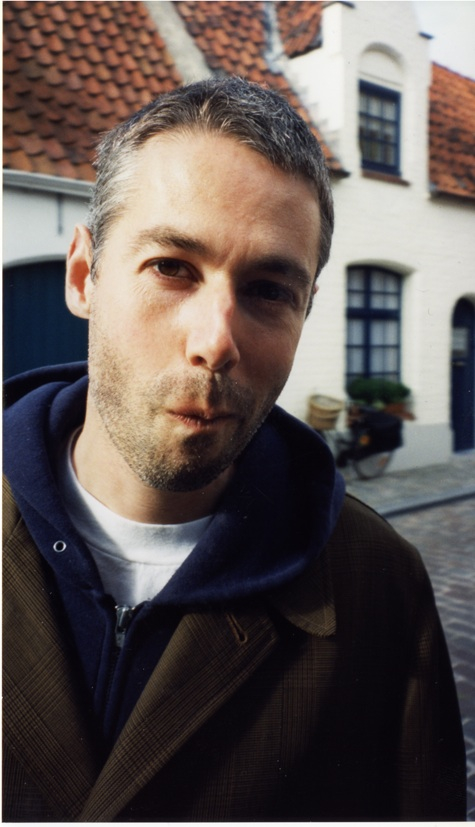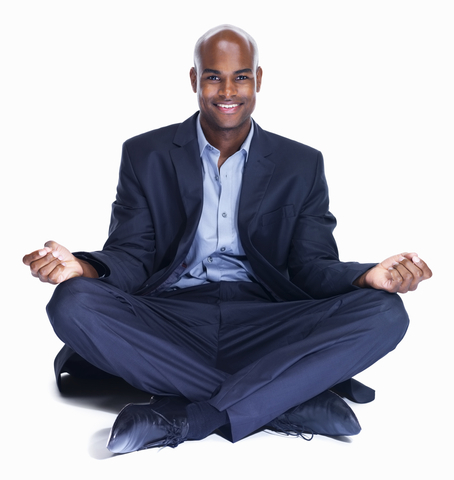This post is dedicated to Adam “MCA” Yauch, Co-Founder of the innovative rap group the Beastie-Boys, founder of the Milarepa Fund, a non-profit organization dedicated to promoting awareness and activism regarding the injustices perpetrated on native Tibetans by the Chinese occupational government and military forces, and devoted husband to his wife, Dechen Wangdu and father to his daughter Tenzin Losel. Adam died on Friday, May 4th, 2012.
How to Meditate, How to Die
This is a the second in a series, How to Meditate, How to Die, and in this post we’ll reflect on how to use the death of others as a way to spur our own contemplation on impermanence and death.
Two posts ago I wrote about the suicide of Sharoni Stern Siegel and we discussed how you can use an event like Sharoni’s death as a means to appreciate your life and use the opportunity that this tragic event offers you to explore the deeper nature of your mind.
And in the last post, we reflected on death and its inevitability. We also began a meditation using a scenario of our own death as a method for bringing this powerful method of meditating into our life. So, why the subject of Adam Yauch?
Piercing the Layer of Denial About Death
Have you ever noticed that you can ignore the subject of your own death, but – strangely – when you find out that someone you never knew has died, like a celebrity, it really affects you? I’m not sure whether this has happened to you or not, but when I find out that someone who I admired or who was notable for their good work dies, it strikes me in a way that opens up my own thoughts and feelings on death. You too?
In this way, we can use the death of Adam as a way to remind us that we too will someday disappear from this world, and despite any great work that we do and how much we benefit others, we’ll still have to leave this place.
When those you know and love, or even those who you don’t personally know die, it can pierce your thin layer of denial that you surround yourself with. If you feel a pang or twinge of pain when you find out that someone you know of has died, let it in. Don’t keep the sharpness of death and dying out! Work with it. Allow it to loosen your grip on the delusion that you’ll never die or that you’ll have a Hollywood death.
In the previous post, we looked at the quote, “Of all footsteps, that of the elephant is supreme; of all mindfulness meditations, that on death is supreme” by the historical Buddha. Why is the meditation on death the “supreme”?
There are many reasons to meditate. Some people meditate to achieve a state of calm, others meditate to relieve stress, and many people use some form of contemplative practice within their religious or spiritual tradition.
Meditation is the Perfect Way to Deal With Death
If you think about meditation as a way to access what is inherently yours to begin with, a state of mind free from distractions and unaltered by your constant habit of creating thoughts about your…thoughts, then meditation is the perfect way to deal with anything that arises in your life…including your death.
“But,” you say, “why meditate on death? It’s such a depressing subject!” Listen, this is what you’ll realize when you practice meditating: death is only depressing when you let your mind run away with the thought of death and when you haven’t realized that life, like your thoughts, is impermanent. Your thoughts are very impermanent, as are your feelings, as are your dramas, hopes and fears!
As you meditate, you’ll begin to see the whole display of your life; your hopes, fears, dreams, ideas, what you wish for and what you avoid – all of it, as impermanent. And when you begin to relate with your life and your thoughts as impermanent, then death won’t seem like something that’s unfair; it simply is.
Yikes, this sh*t sounds heavy! No, it’s not. It simply is a fact of life; with the gift of life comes the certainty of death. As a practicing Buddhist, Adam Yauch knew this. Yet he lived his life, even after his diagnosis with cancer in 2009, as vitally and fully awake as possible. He didn’t take for granted death’s inevitability, he took it “onto the path” by living out his life being who he truly was, creative, passionate about his art, and seeking to benefit others with his gifts. That’s not to say that he didn’t work to cure himself from cancer, he did. He understood the preciousness of life.
Meditate on death. Not in an “Oh my god, this is so morbid” kind of way, but in an acceptance that your life is a gift who’s timeline isn’t guaranteed. Each moment is precious. Your life is precious!! No matter who you are, what you do for a living, what your spiritual, religious or political affiliation is, your life is precious!
By learning to meditate, you’ll become more aware of and engage in your daily life and that matters!! Take advantage of your time here, this ain’t a dress rehearsal! And, the best way that I know of to enjoy every day is to meditate!
In the last post, we covered a basic practice of working with the thought of death during our meditation practice. Let’s stay with this kind of practice but let’s add in another component, let’s add in a sense of what you’d be feeling physically when “your time comes.” Why? You wouldn’t go to your driver’s test without practicing driving first, would you? You wouldn’t attempt to run a marathon without running to strengthen your body would you? So why should you die without practicing first?
How to Meditate On Death
It’s probably best to practice this meditation at home or in an environment where you feel safe and secure. If you’re reading this at work, you may want to wait until you’re back at home…although, you could practice this as a brief thought exercise too, in which case anywhere is fine.
Enter into what meditation practice you’re used to. If you haven’t practiced meditating before, this may be a tough exercise but feel free to use methods provided on this site and try this exercise…as long as you feel up to it. After entering into your meditation practice, begin to work with the fact that at some point in your life, on a date that you have no idea of, your life will come to an end. Allow these thoughts to sink in. Rest in your meditation, returning to your breath or anchor of attention if you become distracted.
Once you’ve gained some stability in this practice, begin to get a feeling of how your body would feel as it slowed down and began to die. Notice the feelings in your body; does your body feel heavy? Light? Like it’s floating? Sinking? Just be with whatever you feel, without trying to push anything away. Do this for a while and then relax, letting go of the exercise.
This kind of “meditating on dying” can be done at anytime, although as we talked about last time, it can be very powerful at bedtime. As we discussed, sleep is a bit like death, saying goodbye to today’s life with the uncertainty about what tomorrow will bring.
Let’s end this post with a quote from the book, Medicine and Compassion—A Tibetan Lama’s Guidance for Caregivers. This quote gently reminds its reader of the importance of reflecting on death and impermanence.
The time spent contemplating and studying impermanence prepares us to accept that the body dies. It’s just a natural consequence of being alive. While you are alive, it is important to learn how to live in such a way that you can be at ease with whatever happens. When dying, it’s important to learn how to die in a way that is not so burdened by anxiety, fear or pain—to learn how to die without dread.[i]– Chokyi Nyima Rinpoche, from Medicine and Compassion—A Tibetan Lama’s Guidance for Caregivers
Learn To Meditate
If reading this post stirs up a lot and you need resources for meditation or to work with this kind of material, please see the Related Posts below. Also please check out other posts on this site. As well, please also feel free to contact me if you need clarification on anything that I’ve written or suggested. I’m also happy to discuss this one-on-one with you if there are specific questions or if you need clarification on anything that I’ve presented.
[space height=”6″]
[divider scroll_text=””]
[space height=”6″]
This site has tons of tools for learning how to meditate and be compassionate.
I encourage you to look through the HUNDREDS of articles that I’ve written and especially check out my weekly meditation tips and other useful meditation materials provided for your health and well being. Please let me know if you’d like to discuss anything with me, have any questions or need clarification regarding anything that I’ve written about.
Other Great Meditation Resources and Information:
For More Information on How to Meditate
Please view the Related Stuff below for help getting started in your meditation practice! Also don’t forget to download my free e-book, Can Meditation Change the Way that You View Your World? and download the free e-book, How to Work with the Four Distractions to Meditation and get started learning how to deal with some of the major obstacles in meditation.
As always, please feel free to share your comments on meditation and contact me if you’d like to see additional content or other discussions on this site.
[button color=”#fff” background=”#FF6600″ size=”medium” src=”http://www.mindingthebedside.com/contact-us/”]Contact Me[/button]
[i] Rinpoche, Chokyi Nyima, Shlim, David R. Medicine and Compassion—A Tibetan Lama’s Guidance for Caregivers. Boston: Wisdom Publications, 2004, pg. 145.




Dear Jerome,
The subject of meditating on dying ( an act as opposed to a concept, as there is no such thing as death) is always extremely exciting and interesting because withing the act of dying there is freedom and nirvana.
Except for the thought of dying, the act of dying is what we need to concern ourselves with. And the act of dying is very different from the thought of dying. The thought of dying is an external experience thus always “out there” and wee feel the need to keep away from it. We dread the thought of dying because it is loaded with meaning and conclusions. But the act of dying is free of that; it is an act free of thought, meaning and conclusion. The thought of dying is in the future, where the act of dying is in the present. The thought of dying, being future focused, gives us the illusion that it may be possible to avoid it for sometime, to keep it at bay, to avoid it for as much as possible. But the act of dying is NOW, the very gateway to the IS-ness of the flame of living. Because the act of dying is the act of living, both taking place in the NOW. The IS-ness of the moment is fueled by the very one act of living and dying.
Meditating on dying is not an act of thought, a movement towards the future, something yet to happen; it is the very substance and essence of this very Eternal moment, which in itself is beyond birth and death. Nothing is born because dying prevents birth and nothing dies because living prevents death. That is the paradox of this very Eternal Moment., the Causeless Now.
Yours Eternally
Hi Johnny –
Thank you for your insightful comments on the nature of dying and how to work with it. You presented an interesting view for other readers to ponder related to how to work with dying. Take care and warm regards, Jerome
Dear Jerome,
Allow me also the privilege to thank you for the inspired words and wisdom…as learning never ceases…as the only truth is change…and motion…within the changeless field of perception…
[…] the previous posts, How to Meditate, How to Die, Part 1, and How to Meditate, How to Die, Part 2 – Even Famous Rappers-Buddhists Die, (please see related posts below) I broached the subject of using death as the object of your […]